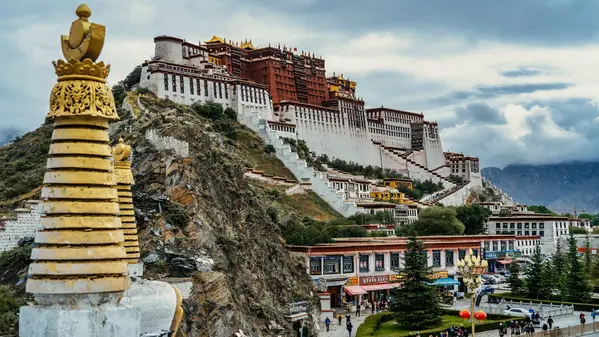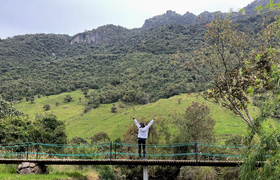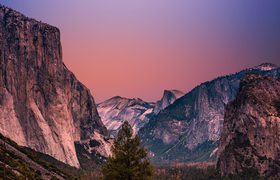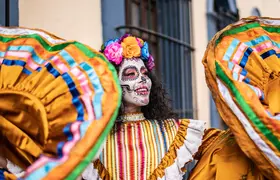
Temples and tea: best things to do in Lhasa, Tibet
Lhasa, the spiritual and cultural heart of Tibet, is where ancient traditions meet breathtaking Himalayan scenery
Lhasa, the capital of Tibet, is both a modern city and a capsule of history. It is home to the grand Potala Palace, from where the Dalai Lama once governed all of Tibet, as well as the sacred Jokhang Temple, a place of pilgrimage for many devout Buddhists and one of Lhasa’s most spiritual sites. The mountains surrounding Lhasa are dotted with working temples, including the "Great Three" monasteries — Drepung, Sera, and Ganden — all of which you can visit on day trips from Lhasa.
In town, relax in cozy Lhasa teahouses for a meal or a sweet milky brew before exploring the city's markets for traditional handicrafts. Here are the best things to do in Lhasa.
Explore Potala Palace
The most famous of the three UNESCO sites in Tibet, Potala Palace sits on a rock outcropping overlooking Lhasa. It was built in the 7th century by King Songtsen Gampo, though it was later destroyed. The larger, current Potala Palace was rebuilt and expanded by the fifth Dalai Lama in the 17th century, and today it’s one of the most iconic landmarks in Lhasa.
A visit involves climbing the hill and then getting lost in the darkened, maze-like corridors, rooms, and shrines within. Seeing the sunset over Potala Palace is an unmissable part of any Tibet trip. From the square below the palace, you can watch the sun light up its whitewashed ramparts and golden rooftops as it dips behind the mountains to the east.
Experience it for yourself on: Best of China & Tibet
Spin the prayer wheels at Jokhang Temple
A kora is a circular walking route that Tibetan pilgrims follow around a shrine, monastery, mountain, or other sacred site. Many pilgrims make a once-in-a-lifetime trip to Lhasa’s Jokhang Temple, considered the holiest site in Tibetan Buddhism, where they can be found walking the kora before entering the temple. Visitors can join this circumambulation, which is always done in a clockwise direction, spinning prayer wheels and inhaling the sweet scent of incense along the way.

Experience it for yourself on: Essential Tibet
Stroll around Barkhor Street
The maze of streets and alleyways just outside the Jokhang Temple, sometimes called the Barkhor Street market, forms the historic heart of Lhasa. The area is constantly busy with pilgrims, tourists, and residents, and numerous shops sell traditional Tibetan handicrafts, Buddhist items, prayer flags, and souvenirs. Several traditional teahouses and restaurants have terraces overlooking Jokhang’s golden rooftops and the Himalayan peaks beyond.
Listen to the monk debates
One of several Lhasa monasteries just outside of town, Sera Monastery is famed for its rare daily ritual of Buddhist debates. Each afternoon, the monastery’s crimson-robed monks fill an outer courtyard and engage in lively debates in which they pair up and exchange ideas on philosophy, scripture, and logic. It's often accompanied by lively gestures, such as rocking back and forth and clapping hands. Visitors are welcome to view the debates by watching respectfully and quietly from the sidelines.

Try authentic butter tea
Po cha (butter tea) is the traditional drink of Tibet. It is a savoury and creamy brew made from a strong, smoky pu-erh tea and mixed with yak butter and salt, sometimes with a bit of yak milk for extra creaminess. It’s a staple drink in the Himalaya, providing calories and warmth to maintain energy at high elevations and in harsh, cold conditions. Numerous restaurants serve local food in Lhasa, where you can also try traditional Tibetan drinks, including butter tea.
Sample Tibetan food
A highlight of Lhasa is trying traditional Tibetan food. It’s not difficult to decide what to eat in Lhasa: start with steaming plates of momos (dumplings stuffed with vegetables or meat), which are ubiquitous and comforting. Yak meat is another staple, served as dried jerky, stir-fried with vegetables, or in hearty stews like thukpa, a comforting noodle soup. Lhasa is not really a fine-dining destination, but the food is perfect for the high mountain climate.

Hike up Chakpori Hill
Chakpori Hill was once home to one of Tibet’s most important medical colleges, though it was destroyed in the mid-20th century. Today, it’s one of the best viewpoints in Lhasa. The climb takes less than 30 minutes, and from the top, you see Potala Palace on one side and the city spreading across the valley on the other, a particularly stunning scene at sunset.
Visit Norbulingka Summer Palace
Norbulingka, meaning "Jewel Park," was built in the 18th century and later became the summer residence of the Dalai Lamas, giving it rich historical significance as a centre of religious and political life in Lhasa. It is a peaceful place to visit, with its willow trees, ponds, ornate Tibetan architecture, and preserved murals depicting Tibetan history and culture.

Experience it for yourself on: Best of China & Tibet
Explore the Tibet Museum
One of Lhasa’s key cultural attractions, the Tibet Museum houses thousands of artifacts and precious relics. On display are religious manuscripts, traditional thangka paintings, Buddhist statues, and exhibits on folk traditions. A visit provides a solid base for understanding Tibetan history and culture in a more structured way before heading to the monasteries and pilgrimage sites.
Visit Ramoche Temple
The 7th-century Ramoche Temple is considered the sister temple to the Jokhang. Both were built by King Songtsen Gampo, and Ramoche was part of a dowry brought by his Chinese wife, Princess Wencheng. Although it’s smaller and receives fewer visitors, Ramoche has a strong historical and spiritual role in Tibet, and it remains an active religious site with a steady stream of pilgrims.

Experience it for yourself on: Essential Tibet
Experience a traditional Lhasa homestay
One of the best cultural experiences in Lhasa is overnighting at a Tibetan homestay. Living daily life alongside a Tibetan family in a traditional home is a great way to become immersed in Tibetan culture, and you’ll no doubt have the opportunity to try home-cooked meals, such as tsampa (roasted barley porridge) and yak milk yogurt.
Relax at a teahouse
Teahouses are an essential part of Tibetan social life, where you’re just as likely to find monks socializing as local families. Sweet black tea with milk and sugar is the preferred drink, often served from large flasks or teapots, and usually accompanied by small snacks like biscuits, seeds, or fruit. Spending an afternoon at a teahouse is one of the most enjoyable local experiences in Lhasa, and it's a great way to acclimatize gently to the high elevation when you first arrive.




